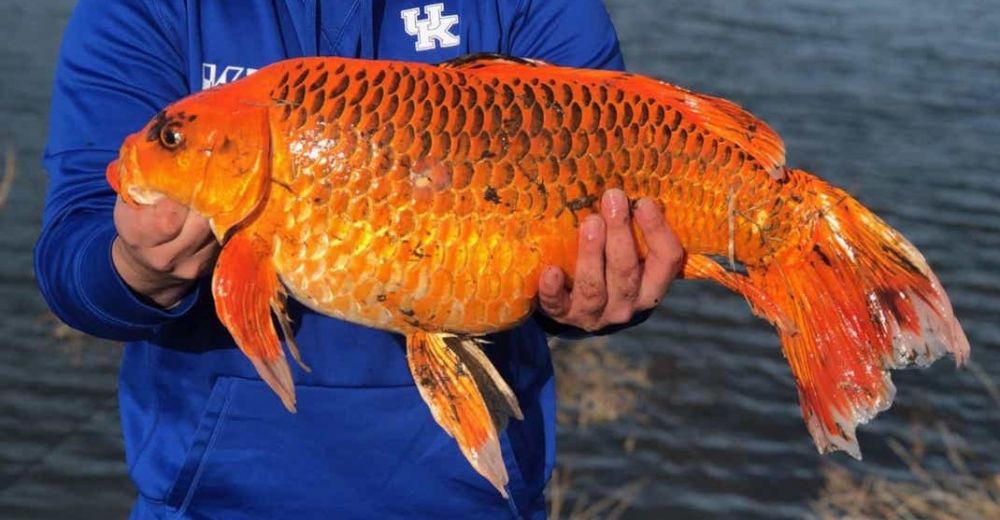
Read the article with FishingTheSpot: the goldfish
Keep an eye on this subject!
Thousands of species spotlights and techniques but also all the local information about your city!



Meet other anglers near you and share your fishing fishing trips, afoot or on a boat, at sea or in freshwater
See the fishing tripsThe Goldfish

All year
X
Did you fish
this species this month?
The Goldfish belongs to the Cyprinidae family. This fish can reach 60 cm and live up to 15 years. It breeds in spring for an average of 1000 eggs.
In the wild, the species Carassius Auratus or Goldfish has an elongated, laterally compressed and slightly high body. The small triangular head is free of scales and barbells. The dorsal fin, concave or straight, begins at the top of the body and ends at the caudal peduncle. The caudal fin, larger and more indented than that of the Crucian carp, has 17 to 20 soft rays. The ventral and pectoral fins and the anal fin are small and thin. The body is covered with small scales. There are 26 to 31 scales on the lateral line. The colors of the Goldfish vary greatly with the environment in which it evolves, from yellowish to bright golden and bronze. Its back is generally darker and his belly lighter. The main distinctive features of the ornamental shape are its flamboyant red color and its many morphological shapes and aberrations.
The Goldfish lifestyle
This fish is omnivorous. It usually stirs the mud from the bottom of the ponds to find his food, meat and plant.
The Goldfish can reproduce from its first year, when the water temperature rises, between 20 and 25°C. It reproduces in the spring. It breeds several times in the same year and one egg laying contains more than 1000 eggs. The female accompanied by several males relies on the available supports (spawning grounds) to lay eggs. The eggs and milt are released in full water and it is at this time that fertilization must take place. When in contact with water, the proteins that cover the egg begin to become adhesive, the egg hydrates and swells, and the micropyle closes again. Eggs that have not been fertilized at this stage are lost. The eggs then adhere to the plants and surrounding surfaces. Incubation can begin. Eggs that are too agglomerated to each other, fallen to the ground or into a poorly oxygenated reduction are at high risk of being lost due to lack of oxygen or pathogenic contact. The remaining eggs hatch after less than a week. The duration of embryogenesis is proportional to temperature and can take six to three days in water at 16 to 24°C respectively. At hatching, the larva's extremities of the digestive tract (mouth and anus) are not yet open, but the larva has a yolk reserve that provides it with the energy and nutrients necessary to complete its formation.
The Goldfish Habitat
It is found in lakes, ponds, dead branches and stagnant river water. The Goldfish found in nature usually comes from aquariums or garden ponds. It adapts remarkably well to its environment.
Originally from East Asia, the goldfish was first introduced in Russia, then in Japan and Europe. Today, the domestic species is present all over the world.
Although they are a hardy species, goldfish need space, oxygen and good quality water to live. He can't live in a jar! Goldfish is a domestic species that requires its owner to place it in an environment adapted to its biological needs.
The Goldfish angling
There is no available information about the goldfish angling.


